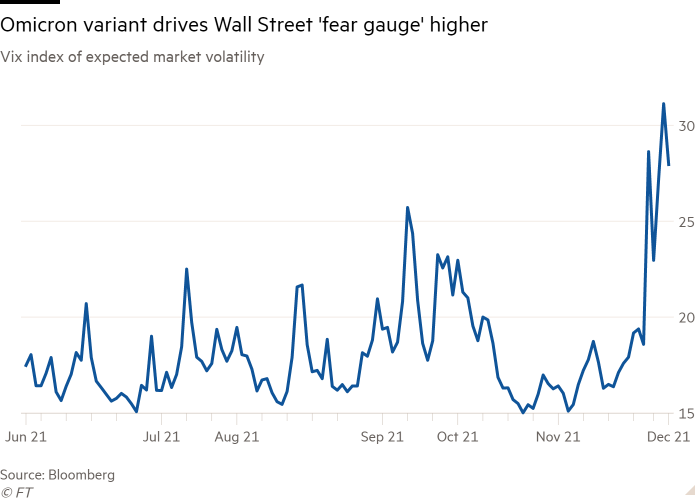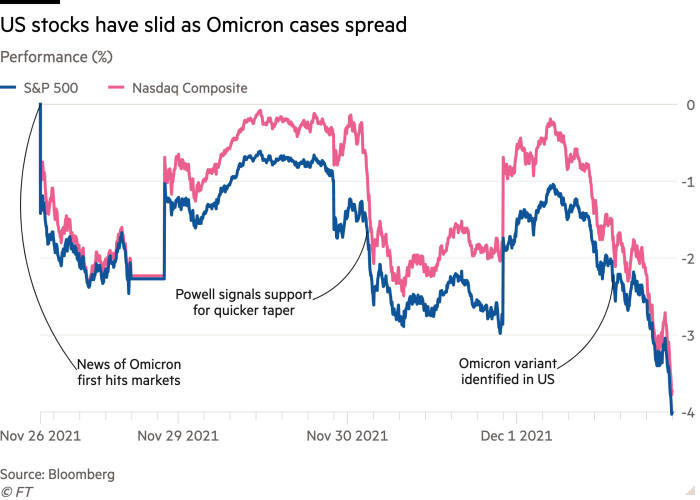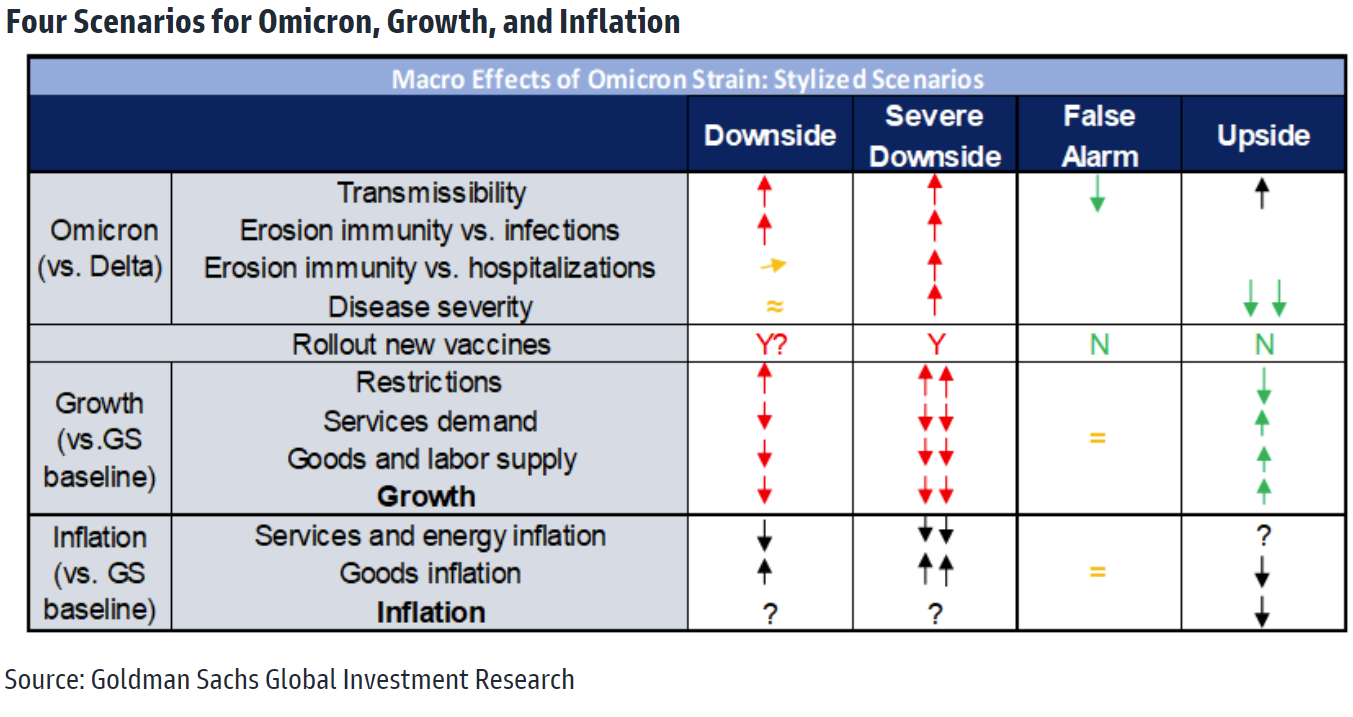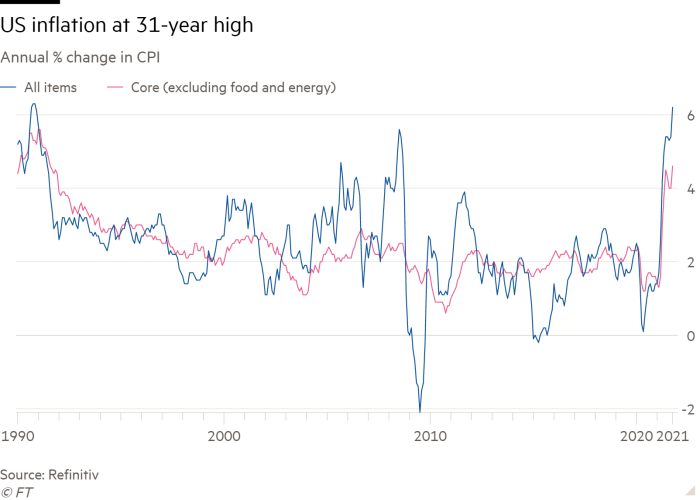
- Fears over the Omicron variant, the effectiveness of current vaccines against it, and a hawkish shift in the Fed’s remarks have culminated in a choppy trading week for investors
- There are four possible scenarios that could develop – including one where the Omicron variant may boost global growth
- As investors brace for more volatility ahead, there may be selective opportunities in the market swings
- The Omicron variant is a wild card for investors and policymakers. We encourage investors not to make hasty decisions and to stay focused on their investment goals
On Black Friday last week, clothes and gadgets were not the only things on sale. Global stock markets dropped as investors became concerned that the newly discovered Omicron variant could trigger further lockdowns that would derail the global economic recovery.
The S&P 500 fell 2.3%, its largest one-day decline since October 2020. The VIX, Wall Street’s so-called “fear gauge”, jumped 49% to its highest reading since January this year. Financials, energy, and travel were the hardest hit sectors. Comparatively, the Delta variant had impacted the consumer sector the most and the related drawdown lasted for about five days in early May.
On Monday, global stocks staged a tentative rebound on optimism that Omicron may prove to be milder than feared. The S&P 500 was up 1.3%, further boosted by US President Joe Biden’s announcement that there would be no need for Omicron lockdowns.
However, fresh concerns about the risks associated with Omicron reversed Monday’s rebound, with stock markets tumbling yet again in the following days. Selloffs further intensified after US Federal Reserve Chair Jerome Powell signalled that the Fed would consider accelerating its withdrawal of bond purchases to fight growing inflation. The somewhat hawkish tone caught markets off-guard, unnerving investors.


The outlook ahead
Markets don’t like uncertainty. With so little known about Omicron, many investors have adopted a “sell first, ask questions later” mentality. Moreover, the S&P 500 has been poised for some profit-taking after rising almost 7% in October and performing strongly for much of November.
“The market has been looking for an excuse to sell off for quite some time,” noted a lead portfolio strategist at Natixis Investment Managers Solutions.
As investors try to assess the severity of the Omicron variant amid the ongoing market volatility, Goldman Sachs has outlined four possible scenarios for Omicron’s impact on global growth.

It noted that while there are downside scenarios that may slow growth, Omicron could have sizable growth effects in the upside scenario.
This scenario where Omicron turns out to be slightly more transmissible but causes less severe disease could result in “a net reduction in disease burden [that] would leave global growth higher than in our baseline, and inflation likely lower as the rebalancing of demand, and the recovery in goods and labour supply accelerate.”
But given that the range of medical and therefore economic outcomes remains unusually wide, it did not make any immediate changes to growth, inflation, and monetary policy forecasts until the likelihood of these scenarios becomes somewhat clearer.
Selective opportunities?
To be sure, market volatility is likely to persist until more information is known about the Omicron variant. While investors are bracing themselves for choppy markets ahead, some see opportunity in the market swings.
In a recent client note, Fundstrat’s Tom Lee shared that the firm “would be aggressive buyers of this pullback”. “As with the case for Beta and Delta variants, the ‘bark’ has proven worse than the bite in each of those precedent instances. The market carnage, in our view, will be short-lived and transitory”, he added.
In a potential downside scenario, Omicron may cause the economy to slow, although its impact on the economy may be less profound than that of previous waves, according to J.P. Morgan Asset Management.
In this case, “pandemic winners” such as e-commerce, healthcare, and stay-at-home stocks will likely continue to benefit while travel and leisure stocks may be impacted from additional restrictions.
In a “false alarm” or upside scenario, it may be that the Omicron variant is not as severe as feared and simply a bump in the road to recovery. Sectors under the most selling pressure right now – airlines, hotels, energy – might rebound as the economic recovery continues.
Are vaccines still effective?
The S&P 500 is up nearly 22% for the year, largely due to how vaccines and a high vaccination rate have enabled economies to reopen. Any vaccine risks could weigh on the so-called reopening trade that has buoyed markets this year.
For now, it remains to be seen how Omicron responds to current vaccines or whether new formulations are required.
Vaccine companies appear divided on this issue. Pfizer has said they are highly confident that the company’s Covid-19 treatment pill is effective against the Omicron variant, and that it could produce a new vaccine to target the Omicron strain in about three months.
Moderna however struck a more cautious tone, warning that Covid-19 vaccines are unlikely to be as effective against the Omicron variant as they have been against the Delta variant. Travel and leisure shares weakened following this news as investors priced in this new development.
What will the Fed do?
Up till last week, investors’ biggest concerns were inflation and how quickly the Federal Reserve would implement rate hikes.
In the US, the annual inflation rate, as measured by the Consumer Price Index (CPI), hit 6.2% in October – the highest in more than 30 years. Fed officials had been discussing the possibility of accelerating the wind-down of their monthly bond purchases, which would allow them to raise interest rates sooner next year to keep inflationary pressures in check.

Given Omicron’s yet unknown impact on global growth, markets had been anticipating central banks to be patient on raising interest rates until more details are known.
But Fed Chair Powell’s comments threw a wrench in market expectations of the timing and extent of rate hikes. Powell signalled that he no longer considers high inflation as “transitory” and that the Fed would revisit the timeline for scaling back its bond-buying programme at its next meeting in December.
The prospect that interest rate hikes might come sooner next year caught investors flat-footed and was a key trigger for Tuesday’s stock market decline.
What does this mean for investors?
There’s still much that we do not know about the Omicron variant. This new strain is a big wild card for investors and policymakers.
While we will get more clarity in the coming weeks, investors should know that stock markets will be highly susceptible to any negative news in the meantime. Key developments to watch would be the Fed and its tapering timeline, as well as how much protection current vaccines offer against Omicron.
In short, the next few days and weeks will remain bumpy as markets wait for more clarity. The best thing to do in such an environment is to keep calm and stay focused on your investment goals. Avoid the urge to make any drastic portfolio decisions or hasty shifts in investment strategy on news headlines in the interim.
For investors looking to add more assets to their portfolios, Omicron-related pullbacks may also be opportunities to invest more at favourable levels.



You must be logged in to post a comment.